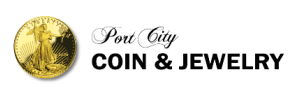Gold and Silver Premiums
Why are gold and silver coins priced higher than the spot price of gold and silver?
Many people ask why are gold and silver product premiums so high? What goes into creating a price higher than the spot price of gold and silver?
Here are some of the reasons that gold and silver products sell for prices higher than the spot price of silver:
Fabrication Charge
In order to mint gold and silver products, raw gold and silver must be cast into coins, rounds and bars. The minting process is labor intensive and involves the use of expensive machinery. Producers of consumer gold and silver products must invest in expensive equipment, such as crucibles and dies and incur energy costs to run the machines, train and pay employees and pay taxes and rent on their manufacturing premises.
Mints buy gold and silver from a variety of sources and themselves, depending on the size of the mint, may pay a price higher than the spot price of gold and silver.
There are many steps in creating gold and silver coins and rounds. The first involves creating a “blank” or planchet. These blanks are the unfinished products on which designs will be imprinted.
The video below show the process of making today’s quarters at the United States Mint.
Note that in the case of the minting of American Silver Eagles, the process is essentially the same, however, the fabrication of the silver blanks is done by third party private mints and sent to the U.S. Mint for imprinting.
The U.S. Mint charges a set fabrication charge to Authorized Dealers on newly minted gold and silver coins.
Authorized dealers buy from the U.S. Mint directly and then sell to other bullion dealers at a mark up, who in turn mark up their products.
Bullion dealers can also buy privately minted gold and silver products from other government mints like the Perth Mint (Australia) the Canadian Mint and the Austrian Mint or from from private mints directly that mint their own products to sell (e.g. Sunshine Minting).
The video below shows how a private mint, the Quality Silver Bullion, makes its silver products. (Quality Silver Bullion was recently sold to the Regency Mint)
Structure of the Market
In addition to the fabrication charge, the structure of the market can impact silver premiums. When the price of silver falls, demand often increases. The U.S. Mint’s $2.35 fabrication charge (and subsequent Authorized Purchaser and dealer markups) often sends silver purchasers in search of silver products with lower premiums. This puts extra demand on the small mints that can often take advantage of increased demand to raise their prices.
Supply and Demand Mismatches
Given the high cost of machinery and the low margins, there are not many mints in the U.S. or the world. Sudden increases or spikes in demand are often unable to be met by existing mints, creating excess silver and gold product demand resulting in prices higher much higher than the spot prices of silver and gold. For example, if the spot price of silver is $20 an ounce, a mint might charge $21-22 per blank – ie a premium over what they paid for the silver or a 10%-20% gross margin. After their own expenses mints generally make a small net profit. Mints rely on volume to make up for the low margin on each product sold.
Design Artist/Licensing Fees
Another often overlooked cost of producing silver and gold products is the price of design. Silver and gold are beautiful metals that almost require an equally beautiful design to be imprinted on them. Artists receive fees and sometimes royalties to have their art work displayed on coins. Designs range from those provided by individual artists under contract to licensing of well know designs from companies like Disney.
Below is a video highlighting some of the artists that are involved in providing designs for the U.S Mint.
Delivery, Storage and Insurance Costs
Sending and insuring raw gold and silver to mints adds additional expense, as does storing, insuring and sending finished gold and silver products from the mints to dealers.
Numismatic Demand
Silver and gold investors and collectors have varying preferences. Some like U.S Mint American and Gold Eagles, other prefer Canadian or Perth Mint products. Others still prefer the lower premiums on privately minted rounds, while other prefer pre 1933 U.S. gold and pre 1965 U.S. silver products. Depending on the current market demand, prices of these gold and silver products can have varying premiums.
Dealer Mark-Up
After all the above expenses are incurred, there is one final cost – dealer market up. This is the final premium the dealers adds over the price he paid for the gold and silver products. Dealers don’t set the prices of gold and silver products, rather they reflect the market price for them.


Be the first to comment on "Calculating Gold and Silver Premiums"